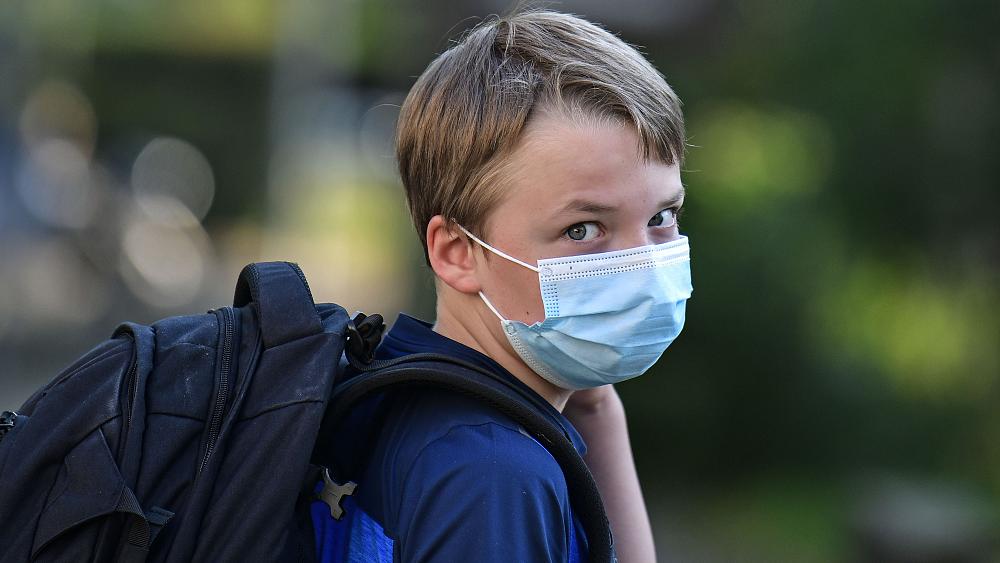
Children in several European countries will this week head back into classrooms after the summer break and months of homeschooling due to the coronavirus lockdown.
Euronews spoke to two experts in children’s physical and mental health to see how you can help your child with their return to school and signs you can look out for that they are struggling with the transition.
Why is school important for children?
“It is vital to get kids back into school,” UK-registered psychotherapist Noel McDermott said. “I can’t state enough how damaging it would be if we kept them out.”
He argues that while youngsters have so far spent a relatively short period of time outside classrooms, which would be unlikely to lead to significant psychological developmental issues, we are reaching a turning point if they do so any longer.
As well as the formal education they provide, McDermott explained that children need the complex social structures provided in school, with education institutions “bridging the gap between home and the rest of the world”.
Without this children are at greater risk of issues concerning their personality development and achieving developmental milestones, he added.
NHS paediatrician Dr Guddi Singh echoed McDermott in saying it is important for children to go to school for both their social and psychological wellbeing, as well as for their education.
She added, however, that the risks posed by the virus should be weighed up against the benefits of children returning to classrooms.
While children do not seem to be the target for this virus and they are much less likely to get symptoms, they may get it and transmit it and at the moment we don’t have enough data about how important they are in terms of transmission, Singh said.
She said we should expect increased rates of transmission resulting from youngsters returning to school but the repercussions of this on things like the burden on a country’s health system would have to be monitored.
Chief medical officers from the United Kingdom in a recent statement advocated for children to return to school after the summer holidays, saying that missing out on education presented a far greater risk to students than catching the virus.
“Very few, if any, children or teenagers will come to long-term harm from COVID-19 due solely to attending school,” the statement, published on August 22, said.
“This has to be set against a certainty of long-term harm to many children and young people from not attending school,” the top health advisors added.
What are signs of anxiety in a child?
Signs a child is struggling to cope or feeling anxious about their return to school won’t be difficult to spot, according to McDermott.
While these will, of course, be age-dependent, they will often manifest as what might look like bad behaviour to adults.
Tantrums, a child appearing withdrawn, or the return of behaviours that had gone away, such as thumb sucking, especially in younger children, are all signs to look out for.
How can you remedy children’s concerns?
McDermott recommends personalising your response to this kind of behaviour, which gives children permission to feel this way.
“I’m feeling afraid and when I feel afraid, I tend to get snappy,” is a good way to address this kind of subject with a child between four and 11-years-old, he said.
Rather than a normal return to school after summer, this will feel like the first day of school for students — everything will be different for them, he added.
Draw on your experience from this time and think about how they reacted in this situation, McDermott said.
Concrete action that caregivers can take includes giving children more time to do things, being understanding if they are feeling anxious and trying to include treats in the week — “the best treat for kids is time with their parents,” he added.
The psychotherapist said parents attitudes go a long way in how children are feeling and he advises to try not to “buy into fear and anxiety and transmit this to your child”.
How can you ensure your child is safe at school?
Singh recommends sitting down with children and explaining what safety measures they can take to protect their loved ones when they return to education institutions.
These include regular handwashing with soap and water for at least 20 seconds, as well as wearing a face and nose covering where social distancing is not possible for children aged 12 or older, in line with the latest WHO advice.
The paediatrician also said children should be made aware of the symptoms of COVID-19 so they can encourage people to get tested if they present any.
She argued that if it is made clear to children what steps they can take to protect themselves and others they will feel safer and be more accepting of the changes to their school environment.
For parents who feel that their child is at increased risk of severe illness from COVID-19, such as children with lung and heart diseases or respiratory conditions, Singh advises that it seems like adults with these conditions are most affected.
She recommends that caregivers open a dialogue with the school: “Contact the school and tell them: ‘I’m worried my kid has asthma, what can we do to make sure they are safe?”
Other action parents can take to make their child’s return to school as safe as possible include encouraging schools to make sure classrooms are well ventilated, as some evidence has shown natural air helps to stop transmission of the virus.
Singh also recommends looking at their journey to the building to try “make sure they are not vectors of transmission.”
Related posts:
Views: 0
 RSS Feed
RSS Feed

















 September 1st, 2020
September 1st, 2020  Awake Goy
Awake Goy  Posted in
Posted in  Tags:
Tags: 
















